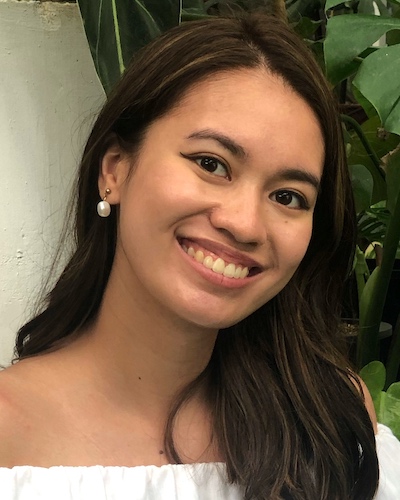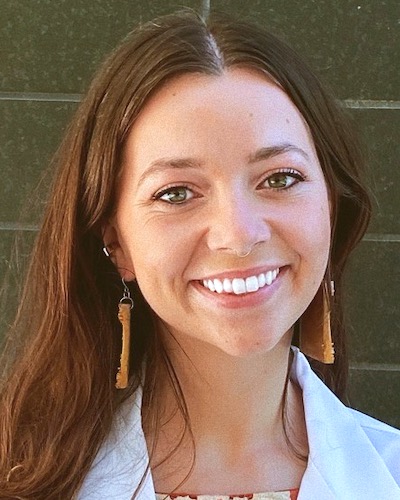Student Blog
Community

Silver Linings ⟩
December 3, 2022, by Aisha
On Thursday, my team and I presented a poster on our community program proposal for our OT 537 course. I felt incredibly proud of the hard work we put into developing a justice-based occupational therapy program called Silver Linings to help previously incarcerated youth successfully reintegrate into the community. Using an occupational therapy lens, we aim to reduce recidivism which is the likelihood of rearrests, and occupational deprivation, which is when external circumstances restrict or limit people’s ability to engage in meaningful activities that promote health and well-being. As many of you may know, youth of color are disproportionately represented in the criminal justice system and treated worse than their white counterparts (Gigante et al., 2022). Although this is a proposal for a class project, my team members and I are passionate about increasing access for marginalized groups and promoting occupational justice. Therefore, we would like to see programs like this implemented in the future. It was encouraging to hear Dr. Arameh Anvarizadeh, one of our inspirations and role models in this field, tell us we should make this happen. That moment was invigorating and reignited the drive I felt when I began OT school!
My incredible team members and me at our poster presentation! Shout out to Dejaney, Zoë, and Sadie. 😊
I’m not going to lie; this semester was very challenging. I struggled with imposter syndrome, burnout, and personal issues while balancing family obligations, work, and school. All of these factors impacted my motivation and mental well-being. I’ve had one too many crying sessions while battling self-doubt and the urge to give up.
No matter how challenging a situation is, there are always silver linings. As I write this, I am grateful for my countless blessings this semester. The first is my supportive family, friends, peers, and professors, who constantly encourage me to take care of myself, produce quality work, and remind me of how far I’ve come. I am forever thankful to be surrounded by brilliant human beings who challenge and inspire me to be the best version of myself personally and professionally. Second, I discovered rock climbing, my new hobby and restorative occupation. Lastly, in the field of occupational therapy, where there is only 5% Black representation, I am filled with joy to be in the midst of incredible history in the making.
Some of my peers, a group of Black women who will be future occupational therapists, and Dr. Anvarizadeh!
Gigante, C. I., Rak, K., Kaplan, A., Helmcamp, L., Otoo, C., & Sheehan, K. M. (2022). A community-based youth diversion program as an alternative to incarceration, Illinois, 2017–2019. American Journal of Public Health, 112(9), 1265–1268. https://doi.org/10.2105/AJPH.2022.306946
⋯

Latinx Heritage Month Celebration ⟩
November 29, 2022, by Tania
Community Diversity First-Gen Getting Involved
Asociación Hispanohablante de Terapia Ocupacional (AHTO) is a student organization in the Chan Division, with the goals to improve the educational experience of Latinx students and to provide care/resources to the Spanish-speaking community. We are a group of aspiring OTs passionate about working with underrepresented and underserved communities. AHTO hopes to support the retention of students of color within the division and to advocate for the needs that our community requires. AHTO is a student organization made by the students and for the students.
We all know the importance of representation in higher education and healthcare. Therefore, the AHTO board worked together to create several events in celebration of Latinx Heritage Month.
The first event was café con pan dulce, which allowed students to connect over some cafesito and conchitas. That same day during lunch students gathered to play Loteria, which is similar to Bingo.

The next event was Case Studies en Español, and this event was made possible with the collaboration of Dr. Celso Delgado Jr.. Our two presenters, Dr. Marilyn Thompson and Dr. Daniel Padilla reviewed two different case studies in Spanish and provided tips on how to best serve the Spanish-speaking community.
We also had a social at a local Latinx-owned restaurant, Casa Fina Restaurant, to support businesses in the community. We enjoyed good food, good music, and great company. We had over 30 people at the event. It was beautiful to see so many people in one room building community.
We closed the celebration with Dia de Los Muertos. Students enjoyed tamales, pan dulce, and crafts.
AHTO hopes to create a safe space and a home away from home for those in the division. We understand that there have been other Latinx organizations before us that maybe have not lasted, but the fact that an organization keeps arising time by time lets us know the need for support in the division and the willingness of our community.
If you are a student and you are interested in getting involved, stay on the lookout for elections next semester!
If you are staff / faculty and wonder how you can best support our student group here are a few ways:
- Attend our events
- Promote our events
- Advocate for funding for student orgs
- Ask us what we need
Special thanks to Dr. Celso Delgado Jr. and Dr. Danny Park for their collaboration and support!
⋯

Chika with Mika: Life as a Post-Professional Master’s Student 2022 Edition ⟩
November 18, 2022, by Mika
Classes Community Diversity International Living in LA School/Life Balance Videos
Hello everyone!
So in Tagalog, chika means “chit-chat”. For this month’s blog post (or rather vlog post), I wanted to chika with you what’s it like to be a post-professional master’s student here in USC Chan! Get to see the Health Science Campus where we have most of our classes and meet some of my friends here in the program. I also shared some clips of my adventures here in LA, particularly in the Grand Central Market, Griffith Park, and Venice Beach!
Happy watching!
⋯

A Week in the Life! ⟩
November 17, 2022, by Yoojin
Classes Community Living in LA School/Life Balance
As a student ambassador, one of the questions I get the most is how my weekly schedule looks like. Do I have time for a part-time job? What about hobbies? Hanging out with friends and family? Basically, when I enroll in this program, will I have a life outside of school? The short answer is yes. I have a great balance of academics and engaging in my favorite occupations.
With that being said, here’s a little glance into a typical week:
Monday: aside from class from 1:30 PM – 5:30 PM, I go to the gym, go grocery shopping, or just sleep in. In the evening, I try to catch the sunset (at least I did before Daylight Savings ended) on one of my favorite short hikes near HSC, Ascot Hills. All USC students have a free membership for the three gyms on UPC and one at HSC.
Tuesday: Level I Fieldwork, a once-a-week hands-on experience at a site in the community (ex. hospital, private clinic, community center, permanent supportive housing, school). I’m here from 10 AM – 4 PM, but your hours will depend on your specific site.
Wednesday: class from 9 AM – 4:30 PM, with a 1.5-hour lunch break to eat lunch and work on a drawing in the craft restorative classroom with my friends. Throughout the semester, there are events led by various student organizations. This week, I attended an open forum with students and Chan leadership to discuss the recent administrative changes in Chan admissions leadership regarding holistic admissions and diversity.
Thursday: class from 9 AM – 4:30 PM, with a 1.5-hour lunch break where I usually work and grab Dunkin’ Donuts from on campus and attend a meeting. Global Initiatives (GI), USC Occupational Therapy and Science Council (OTSC), and Coalition of Occupational Therapy Advocates for Diversity (COTAD) are hosting a Friendsgiving dinner.
Friday: I have no class or fieldwork, so I run errands. In the evening, I go out with friends. LA has so many things to do. Here’s a previous student blog about some activities.
I’ve also picked up a handful of occupations over the summer that I mentioned in my previous blog. Work-life balance needs active effort to achieve, but it’s definitely doable in OT school.
⋯

OT school helped me get diagnosed with ADHD (and gain tools to thrive in grad school!) ⟩
October 6, 2022, by Leah
Community Life Hacks School/Life Balance
I have been called “spacey” my entire life. I had a big imagination and could spend hours enjoying my daydreaming, even at the dinner table or in class. I would get lost trying to go to my best friend’s house around the corner, lose everything I owned, and frequently come home from school with bruises I had no idea how I got. But I was also an extremely hard worker and teacher’s pet and did everything to get straight As and every gold star growing up (while being a professional procrastinator). I felt a bit misunderstood by my peers, impacting my mental health, but I continued to blast through life, mostly successful.
When I started OT school, I was shocked at how much harder it felt to manage my education and life with my classic, procrastinate to the last second, memorize everything, and write a paper in 2 hours routine. Graduate school requires a significant amount of self-management and structure for larger, more complex projects.
Of course, at the time, ADHD was getting a lot of attention on social media, and I was shocked at how much it resonated with me, especially ADHD inattentive type in women. A few peers and I began to discuss our shared experiences, bonding over our lifelong “quirks” and growing difficulties managing graduate school. We collectively agreed to contact the student health center. From there, I received a referral for an ADHD evaluation with a psychologist and Lifestyle Redesign.
Firstly, I did get diagnosed with ADHD, inattentive type, woohoo! But more importantly, I began receiving Lifestyle Redesign services, which are covered by student health insurance. There, I learned how to build supportive routines for my eating, sleeping, and home management tasks. We completed activity analyses of my coursework and jobs so I could better plan out my weeks. We discussed environmental supports that I needed to be able to pay attention to tasks and use the Pomodoro method to manage my time. Furthermore, my OT helped my explore my options for accommodations with the USC office of student accommodations. Not only did I get to help develop habits and routines to support my role as a graduate student and young adult navigating a new diagnosis, but I was also able to see how powerful OT can be on the receiving end.
I am grateful for the support USC offers its students, and I highly recommend asking for help when you need it and seeing what resources may be available to you as a student.
⋯










